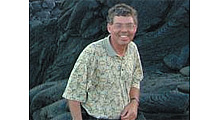FCC Eases Licensing of Airborne Satellite Communications

Doug Lung
The FCC issued a Report and Order and Notice of Proposed Rulemaking (NPRM) (FCC 12-161) that grants Earth Stations Aboard Aircraft (ESAA) primary status in the 11.7-12.2 GHz downlink band and proposes giving ESAA primary status in the 14.0-14.5 GHz uplink band. The Report and Order defines procedures and requirements for licensing ESAA, either individually or as a blanket license, and requirements for antenna positioning accuracy and off-axis antenna pattern/emission limits.
In addition to receiving primary status in the 11.7-12.2 GHz band, ESAA are also allowed to use two satellite bands--10.95-11.2 GHz and 11.45-11.7 GHz--that are normally only available for use outside the United States. Operations in these two bands are unprotected. In the United States the 10.95-11.2 GHz and 11.45-11.7 GHz bands are used by fixed service microwaves for Local Television Transmission Service, Microwave Business, Microwave Public Safety, and Common Carrier Fixed Point-to-Point.
The Report and Order states: “Because ESAA downlink operations in these bands will not interfere with or restrict current or future FS operations and because ESAA will not receive protection from the FS in these bands, we find, as we did for ESV and VMES, that the intent of NG104 and Section 25.202(a)(1) will not be undermined by allowing ESAA to operate domestically in these bands.”
ESAA stations will need to protect authorized Space Research Service (SRS) facilities using the 14.0-14.2 GHz sub-band. There are currently two of these in the United States. One is located in Guam and the other in White Sands, N.M. Both are operated by NASA. Another TDRSS receive facility is planned for Blossom Point on the Eastern Shore of Maryland. Operations in the 14.0-14.5 GHz band within the radio line-of-sight to these facilities must be coordinated with NTIA to resolve any potential interference concerns. ESAA stations must also protect Radio Astronomy Service locations using the 14.47-14.5 GHz band through coordination with the National Science Foundation (NSF) before beginning operation within radio line-of-sight of these facilities. Coordination is likely to be more difficult for ESAA than ESV or VMES due to the large line-of-sight distance from altitudes used by commercial aircraft.
In the NPRM attached to the Report and Order, the FCC proposed granting ESAA uplinks the same primary status as fixed earth stations in the 14.0-14.5 GHz band.
The FCC previously licensed ESAA stations on an ad hoc basis. The new rules will make them easier to license, which may lead to more air carriers installing in-flight Internet equipment in their planes. I've had experience with the satellite-based system that Southwest has on many of its flights, as well as the ground-based system (“Gogo”) offered on Delta flights. Overall, my luck has been better with the ground-based system. One of the challenges that any geostationary satellite Internet service provider faces--on the ground or in the air--is the huge latency caused by the more than 44,000 mile signal path to the satellite and back. Typical round-trip latency exceeds one second, which causes problems with secure Internet connections that need more handshaking.
Get the TV Tech Newsletter
The professional video industry's #1 source for news, trends and product and tech information. Sign up below.

Doug Lung is one of America's foremost authorities on broadcast RF technology. As vice president of Broadcast Technology for NBCUniversal Local, H. Douglas Lung leads NBC and Telemundo-owned stations’ RF and transmission affairs, including microwave, radars, satellite uplinks, and FCC technical filings. Beginning his career in 1976 at KSCI in Los Angeles, Lung has nearly 50 years of experience in broadcast television engineering. Beginning in 1985, he led the engineering department for what was to become the Telemundo network and station group, assisting in the design, construction and installation of the company’s broadcast and cable facilities. Other projects include work on the launch of Hawaii’s first UHF TV station, the rollout and testing of the ATSC mobile-handheld standard, and software development related to the incentive auction TV spectrum repack. A longtime columnist for TV Technology, Doug is also a regular contributor to IEEE Broadcast Technology. He is the recipient of the 2023 NAB Television Engineering Award. He also received a Tech Leadership Award from TV Tech publisher Future plc in 2021 and is a member of the IEEE Broadcast Technology Society and the Society of Broadcast Engineers.
